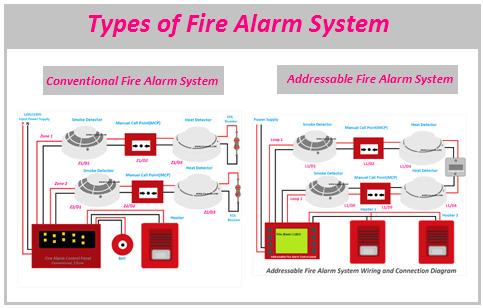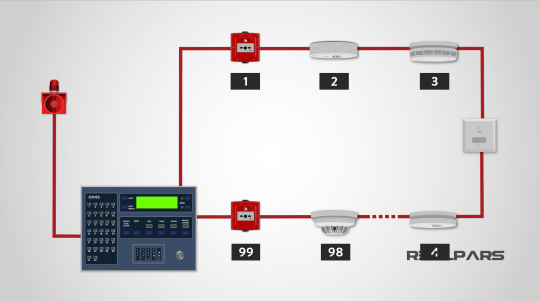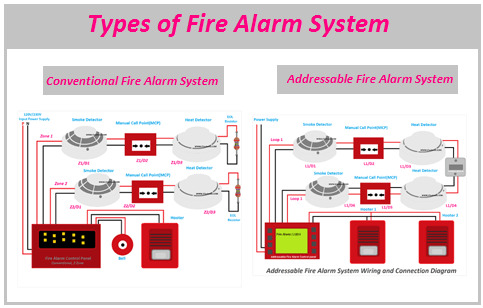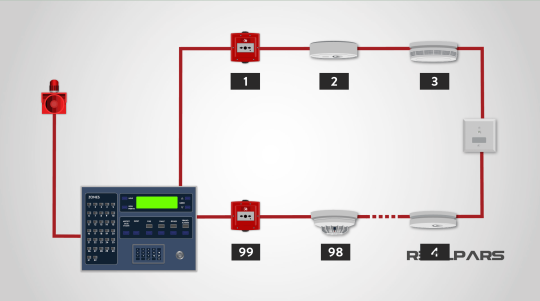#fire detection design
Explore tagged Tumblr posts
Text
Intozi's AI-Powered Smoke and Fire Detection - A Technological Sentinel for Safety
In today's dynamic and fast-paced world, ensuring the safety of employees and assets is a top priority for organizations. Intozi steps into this crucial realm with its AI-powered Fire and Smoke Detection Solution. This innovative system, backed by advanced computer vision technology, provides real-time alerts and advanced analytics, empowering organizations to prevent fire incidents before they occur. In this blog post, we'll explore the key features that make Intozi's solution an indispensable asset for enhancing safety and security.
Smoke & Fire Detection Solution Key Features:
Real-time Alerts for Potential Incidents
Intozi's AI-powered solution ensures swift and real-time alerts for potential fire and smoke incidents. The system is designed to detect anomalies instantly, enabling organizations to take immediate action and mitigate risks effectively.
Advanced Analytics for Detection and Prevention
Leveraging advanced analytics, the solution goes beyond basic detection by actively preventing fire and smoke incidents. The sophisticated algorithms enhance accuracy, providing a proactive approach to safety management and minimizing false positives.
Video Evidence Captured by Smoke Camera Detectors
The inclusion of smoke camera detectors ensures that events related to fire and smoke detection are not only alerted in real-time but also documented with video evidence. This visual documentation is invaluable for investigations, post-incident analysis, and compliance requirements.
Easy Integration with Third-Party Systems
Intozi's Fire and Smoke Detection Solution is designed with versatility in mind. It seamlessly integrates with third-party systems, offering organizations the flexibility to enhance their existing safety infrastructure without disruption.
Automatic Alerts for Suspected Incidents
The system automates the alerting process, ensuring that suspected fire and smoke incidents trigger immediate notifications. This automation reduces response time, providing a proactive approach to safety management.
Intozi's Commitment to Safety and Security
With Intozi's Fire and Smoke Detection Solution, powered by AI Video Analytics, organizations gain a technological sentinel against potential threats. The solution embodies a commitment to ensuring the safety and security of employees and assets, aligning with modern safety standards.
Conclusion
Intozi's AI-powered Smoke and Fire Detection Solution stands as a technological guardian, offering real-time alerts, advanced analytics, and seamless integration. With features like video evidence capture and automatic alerts, organizations can rely on Intozi to provide a comprehensive safety net. Choose Intozi for a future-ready solution that prioritizes the safety and security of your organization.
0 notes
Text
So guys, I was reading the story of the God Kagutsuchi, and I thought it was really cool.
I really think this part of Japanese culture is really cool, and I was wondering, if Makoto was literally a God? Everything indicates that he would be a God, come on. 🎭🔥
Some alternate history where the characters are god.


I tried to make a graphic representation of him in a kimono, it didn't turn out well, I know, I saw some Japanese users on Twitter/X making him in a kimono with Yuma, and I decided to do it. Don't worry, I made the purple version because it's almost like his theme color.
He would probably have a nicer kimono than this, but there you go. Also, his appearance as God Kagutsuchi would be much better than the one I made, but it was an attempt. I think his main powers could be: he would originally have had electricity, but he would have appeared to control fire during the 3 years. I think the choices of names for the characters were very creative, you know? And designs too.
I needed to share these thoughts right away, don't worry about drawings for his month, it's all planned out. I just made this random drawing because I wanted to make him in a kimono. :D
#master detective archives: rain code#mdarc#rain code#raincode#makoto kagutsuchi#art#my art#fanart#God Au?#I like the Gods designs#I'm just not very creative#what kind of God would he be?#Fire God?#Flame God?#God of destruction?#sun god?
15 notes
·
View notes
Text

Goodnight (forever)
#master detective archives: rain code#shinigami rain code#I've been drawing fire emblem characters for so long that I forgot how nice it feels to color something with a simple design...#We'll be back to the regularly scheduled program soon...
46 notes
·
View notes
Text
I got a new song out! if you fw this then you'll like my other stuff
Plzzzz Go check me out.
#music#soundcloud#rap#e-blood#pop music#hiphop#rap cloudrap rage hiphop alt alternative#alternative#fire#rapmusic#deep#design#character design#graphic design#home decor#decor#interior design#lana del rey#delete later#dead boy detectives#disco elysium#kim kitsuragi#kimharry#harry du bois#writers on tumblr#tech#typography#tattoos#television#across the spiderverse
4 notes
·
View notes
Text
Justice League Action had amazing character designs and I love them.

To be fair, Jaime Reyes Blue Beetle is one of the best character designs DC's ever done, it looks good in every artstyle and medium: it's insane. But, the relative size of his head-to-eyes and getting rid of the mouth adds a lot of unique expression to it!

Nothing too fancy, but Booster's small legs and how his body stretches out as you go up it makes me laugh: Of COURSE he'd skip leg day, and good on them for making a point of it!

Stargirl just has a strong profile, and I think it best displays the more upbeat personality Johns gave her, plus the super-long hair is such a neat touch! I dunno, this show was what got me into the character and she's just the best.

I love the simplicity of the Flash design: taking away most of the textural elements and letting the colours pop really keep things from being too complicated, and is just a general breath of fresh air for Flash designs. Plus, I LOVE how friendly the eyes on this version are.*

The parted hair shows her pragmatic nature, whilst also giving the tiara a nice bonus use as a hairband, which is a neat reinterpretation. I dunno, it strikes a fun balance between superheroic and warrior-esque that reflects well on Diana's charactertisation!

Obligatory gorillas doing things gorillas wouldn't normally do. - It's a DC staple, though it isn't really a character-design thing. *I am not an artist, I could not tell you why, but he's my friend so shut it.
#justice league#blue beetle#dc comics#gorillas doing things gorillas wouldn't normally do#Seriously DC has so many gorillas#Gorilla grodd#ultra humanite#monsieur mallah#I guess the brain too as he put himself into a robot body at the start of the new Doom Patrol run#gorilla city in general. like. they're all gorillas#jackanapes#charlie the gorilla - we'll count it#gorilla gredd of course!#whilst not a gorilla we gotta count him#detective chimp#the first guy to put a gorilla in a DCEU thing being the guy in charge is so true to the spirit of DC and fills me with joy#Also the zatanna design for this show was fire but Zee always looks great so eh
11 notes
·
View notes
Text
Installation of Fire Alarm Systems

Installation of Fire Alarm Systems

مرحباً بكم في بداية جروب – خبراء في أنظمة إنذار الحريق
نحن في بداية جروب نقدم لكم خدمات متكاملة في أنظمة إنذار الحريق، مع ضمان أعلى معايير السلامة. تواصل عبر الواتساباتصل بنا الآن
1. Importance of Fire Alarm Systems
The importance of fire alarm systems is evident in several aspects:
Protection from Hazards: They alert individuals in case of a fire, providing sufficient time to evacuate the building.
Reducing Financial Losses: Early detection of fire can minimize material damage and aid in preserving property.
Compliance with Legal Requirements: In many countries, installing fire alarm systems is mandatory in public and commercial buildings.
2. Types of Fire Alarm Systems
Fire alarm systems include several types, such as:
Manual Alarm Systems: Such as manual pull stations activated by individuals during an emergency.
Automatic Alarm Systems: These rely on sensors to detect smoke or heat and automatically issue alerts.
3. Steps for Installing Fire Alarm Systems
The steps for installing fire alarm systems can be summarized as follows:
Initial Assessment: Evaluate the building and identify the most vulnerable areas.
Choosing the Appropriate System: Select the suitable type of system based on the building's needs.
Installation: Install sensors, alarms, and control panels professionally.
Testing and Confirmation: After installation, the system must be tested to ensure efficient operation.
4. Regular Maintenance
To ensure the continuous operation of the fire alarm system, regular maintenance is crucial. Maintenance includes:
Sensor Checks: Ensure their effectiveness and proper functioning.
Device Testing: Verify that all alarms operate correctly.
System Updates: Consider updating the system to keep pace with technological advancements.

5. Choosing a Professional Installation Company
It's important to choose a reliable company for installing fire alarm systems. The company should have:
Experience: A long history in installing and maintaining alarm systems.
Licensing: Be licensed and certified by official authorities.
After-Sales Service: Provide support and maintenance services post-installation.
Installing fire alarm systems is a crucial step in protecting lives and property. The right system and professional installation ensure the system's effectiveness. Don’t hesitate to contact Bidaya Company for a free consultation and reliable installation services.
Installation of Fire Alarm Systems
Fire alarm systems are among the most important safety elements in buildings, playing a vital role in protecting lives and property. Therefore, installing these systems is a complex process requiring expertise and technical knowledge. Here are additional details about installing fire alarm systems.
مرحباً بكم في بداية جروب - خبراء في أنظمة إنذار الحريق
نحن في بداية جروب نقدم لكم خدمات متكاملة في أنظمة إنذار الحريق، مع ضمان أعلى معايير السلامة. تواصل عبر الواتساباتصل بنا الآن
1. System Design
Before starting the installation process, the fire alarm system must be designed based on several factors, such as:
Building Size: Larger buildings require more complex systems that include multiple sensors and alarms.
Building Usage: The system design varies depending on the building's purpose (residential, commercial, industrial).
Construction Materials: The materials used in the building affect how smoke and heat spread, impacting sensor installation locations.
2. Types of Sensors
Fire alarm sensors differ based on how they detect fire:
Smoke Sensors: Detect smoke particles in the air and vary between ionization and photoelectric smoke sensors.
Heat Sensors: Detect abnormal increases in temperature and include fixed and two-point sensors.
Flame Sensors: Detect flames using infrared or visible light and are effective in environments where high temperatures can cause false alarms.
3. Control Panels
Central control panels are essential components of the fire alarm system. They manage all sensors and alarms and include:
System Status Display: Shows the status of each sensor in the system, indicating whether it is in normal operation or detecting a fire.
Interaction Capabilities: Allow the user to interact with alerts and manually control the system.
Event Logging and Documentation: Some panels have event logging features, allowing for tracking and documenting any alerts that occur.
4. Safety Procedures During Installation
When installing a fire alarm system, it’s essential to adhere to several safety procedures to avoid any risks, including:
Power Shutdown: Ensure that all electrical systems are turned off during installation to avoid electrical shocks.
Using Appropriate Equipment: Utilize suitable installation tools and equipment to prevent damage to any components during installation.
Providing Adequate Ventilation: If using chemicals or adhesives, ensure proper ventilation to avoid inhaling harmful substances.

مرحباً بكم في بداية جروب - خبراء في أنظمة إنذار الحريق
نحن في بداية جروب نقدم لكم خدمات متكاملة في أنظمة إنذار الحريق، مع ضمان أعلى معايير السلامة. تواصل عبر الواتساباتصل بنا الآن
5. Training and Awareness
After installing the fire alarm system, training for workers or residents in the building on how to use the system is vital. Training includes:
Recognizing Fire Alarms: Clarifying how to recognize alarm signals and the importance of rapid response.
Evacuation Plans: Explaining the evacuation plan in case of fire, including safe routes and designated meeting areas.
6. Modern Technologies in Fire Alarm Systems
Modern technologies used in fire alarm systems include:
Integration with Other Security Systems: Such as surveillance and cameras, providing an additional level of security.
Alerts via Smartphones: Sending instant alerts to mobile devices in case of fire, allowing for quick action.
Artificial Intelligence Systems: Using AI to analyze data for detecting patterns and potential threats.
Installing fire alarm systems requires technical knowledge and high expertise to ensure their effective operation. It is essential to choose a reliable company like Bidaya Company to ensure the installation of a comprehensive system that complies with international safety standards and achieves maximum security.
Installation of Fire Alarm Systems
The installation of fire alarm systems is a vital step in enhancing safety within any building. These systems require careful planning and a deep understanding of the available technologies. In this context, we will delve into more details about installing fire alarm systems, along with keywords that enhance the article’s visibility in search engines.
1. Preliminary Planning for System Design
Before commencing the installation process, specialists should conduct a comprehensive site assessment. This includes:
Studying the Building Layout: Analyzing the layout to identify the most critical points for sensor installation, such as hallways, rooms, and enclosed spaces.
Identifying Hazard Sources: Pinpointing potential fire outbreak locations, such as kitchens and storage areas, to ensure nearby sensors are installed.

2. Modern Detection Technologies
Modern technologies used in fire alarm systems employ advanced methods to improve detection accuracy, including:
Advanced Sensors: Such as smart sensors capable of distinguishing between smoke from a fire and smoke from cooking.
Nano Technology: Utilizing it to develop lightweight and compact sensors that enhance system effectiveness.
مرحباً بكم في بداية جروب - خبراء في أنظمة إنذار الحريق
نحن في بداية جروب نقدم لكم خدمات متكاملة في أنظمة إنذار الحريق، مع ضمان أعلى معايير السلامة. تواصل عبر الواتساباتصل بنا الآن
3. Integration with Other Security Systems
Integrating fire alarm systems with other security systems in the facility provides an additional level of protection:
Automatic Fire Suppression Systems: Can work in tandem with alarms to extinguish fire in its early stages.
Audible Alarm Systems: Alert people inside the building to evacuate and can be connected to a public address system.
4. Installation Guidelines
When installing fire alarm systems, a set of guidelines must be followed to ensure efficient installation:
Avoid Interference: Sensors should be installed away from excessive heat sources, such as electric bulbs.
Consider Heights: Determine the appropriate height for sensor installation based on their type. For example, smoke sensors should be installed 30-60 cm from the ceiling.
Correct Orientation: Position sensors effectively toward areas where smoke accumulates.
5. Performance Testing
After installation, comprehensive performance tests should be conducted to verify the system’s effectiveness:
Simulation Tests: Simulate fire scenarios using artificial smoke to ensure the system responds appropriately.
Performance Evaluation: Measure the sensors’ response time and accuracy in detecting fire locations.
6. Periodic Maintenance Strategies
Fire alarm systems require regular maintenance to ensure ongoing efficiency:
Schedule Inspections: Develop a plan to inspect systems periodically, at least once every six months.
System Updates: Consider updating the system in line with the latest available technologies.

Keywords
Installation of fire alarm systems
Fire protection
Automatic alarm systems
Smoke sensors
Fire system maintenance
Fire detection technologies
Integrated security systems
Importance of alarm systems
Fire system performance testing
Design of fire alarm systems
The installation of fire alarm systems requires dedication and high technical knowledge. Ensure to choose a professional company like Bidaya Company to guarantee an effective system installation that achieves the highest safety standards. If you have any inquiries or need consultation, please do not hesitate to contact us!
#Installation of fire alarm systems#Fire protection#Automatic alarm systems#Smoke sensors#Fire system maintenance#Fire detection technologies#Integrated security systems#Importance of alarm systems#Fire system performance testing#Design of fire alarm systems
0 notes
Text
Installation of Fire Alarm Systems

Installation of Fire Alarm Systems

مرحباً بكم في بداية جروب – خبراء في أنظمة إنذار الحريق
نحن في بداية جروب نقدم لكم خدمات متكاملة في أنظمة إنذار الحريق، مع ضمان أعلى معايير السلامة. تواصل عبر الواتساباتصل بنا الآن
1. Importance of Fire Alarm Systems
The importance of fire alarm systems is evident in several aspects:
Protection from Hazards: They alert individuals in case of a fire, providing sufficient time to evacuate the building.
Reducing Financial Losses: Early detection of fire can minimize material damage and aid in preserving property.
Compliance with Legal Requirements: In many countries, installing fire alarm systems is mandatory in public and commercial buildings.
2. Types of Fire Alarm Systems
Fire alarm systems include several types, such as:
Manual Alarm Systems: Such as manual pull stations activated by individuals during an emergency.
Automatic Alarm Systems: These rely on sensors to detect smoke or heat and automatically issue alerts.
3. Steps for Installing Fire Alarm Systems
The steps for installing fire alarm systems can be summarized as follows:
Initial Assessment: Evaluate the building and identify the most vulnerable areas.
Choosing the Appropriate System: Select the suitable type of system based on the building's needs.
Installation: Install sensors, alarms, and control panels professionally.
Testing and Confirmation: After installation, the system must be tested to ensure efficient operation.
4. Regular Maintenance
To ensure the continuous operation of the fire alarm system, regular maintenance is crucial. Maintenance includes:
Sensor Checks: Ensure their effectiveness and proper functioning.
Device Testing: Verify that all alarms operate correctly.
System Updates: Consider updating the system to keep pace with technological advancements.

5. Choosing a Professional Installation Company
It's important to choose a reliable company for installing fire alarm systems. The company should have:
Experience: A long history in installing and maintaining alarm systems.
Licensing: Be licensed and certified by official authorities.
After-Sales Service: Provide support and maintenance services post-installation.
Installing fire alarm systems is a crucial step in protecting lives and property. The right system and professional installation ensure the system's effectiveness. Don’t hesitate to contact Bidaya Company for a free consultation and reliable installation services.
Installation of Fire Alarm Systems
Fire alarm systems are among the most important safety elements in buildings, playing a vital role in protecting lives and property. Therefore, installing these systems is a complex process requiring expertise and technical knowledge. Here are additional details about installing fire alarm systems.
مرحباً بكم في بداية جروب - خبراء في أنظمة إنذار الحريق
نحن في بداية جروب نقدم لكم خدمات متكاملة في أنظمة إنذار الحريق، مع ضمان أعلى معايير السلامة. تواصل عبر الواتساباتصل بنا الآن
1. System Design
Before starting the installation process, the fire alarm system must be designed based on several factors, such as:
Building Size: Larger buildings require more complex systems that include multiple sensors and alarms.
Building Usage: The system design varies depending on the building's purpose (residential, commercial, industrial).
Construction Materials: The materials used in the building affect how smoke and heat spread, impacting sensor installation locations.
2. Types of Sensors
Fire alarm sensors differ based on how they detect fire:
Smoke Sensors: Detect smoke particles in the air and vary between ionization and photoelectric smoke sensors.
Heat Sensors: Detect abnormal increases in temperature and include fixed and two-point sensors.
Flame Sensors: Detect flames using infrared or visible light and are effective in environments where high temperatures can cause false alarms.
3. Control Panels
Central control panels are essential components of the fire alarm system. They manage all sensors and alarms and include:
System Status Display: Shows the status of each sensor in the system, indicating whether it is in normal operation or detecting a fire.
Interaction Capabilities: Allow the user to interact with alerts and manually control the system.
Event Logging and Documentation: Some panels have event logging features, allowing for tracking and documenting any alerts that occur.
4. Safety Procedures During Installation
When installing a fire alarm system, it’s essential to adhere to several safety procedures to avoid any risks, including:
Power Shutdown: Ensure that all electrical systems are turned off during installation to avoid electrical shocks.
Using Appropriate Equipment: Utilize suitable installation tools and equipment to prevent damage to any components during installation.
Providing Adequate Ventilation: If using chemicals or adhesives, ensure proper ventilation to avoid inhaling harmful substances.

مرحباً بكم في بداية جروب - خبراء في أنظمة إنذار الحريق
نحن في بداية جروب نقدم لكم خدمات متكاملة في أنظمة إنذار الحريق، مع ضمان أعلى معايير السلامة. تواصل عبر الواتساباتصل بنا الآن
5. Training and Awareness
After installing the fire alarm system, training for workers or residents in the building on how to use the system is vital. Training includes:
Recognizing Fire Alarms: Clarifying how to recognize alarm signals and the importance of rapid response.
Evacuation Plans: Explaining the evacuation plan in case of fire, including safe routes and designated meeting areas.
6. Modern Technologies in Fire Alarm Systems
Modern technologies used in fire alarm systems include:
Integration with Other Security Systems: Such as surveillance and cameras, providing an additional level of security.
Alerts via Smartphones: Sending instant alerts to mobile devices in case of fire, allowing for quick action.
Artificial Intelligence Systems: Using AI to analyze data for detecting patterns and potential threats.
Installing fire alarm systems requires technical knowledge and high expertise to ensure their effective operation. It is essential to choose a reliable company like Bidaya Company to ensure the installation of a comprehensive system that complies with international safety standards and achieves maximum security.
Installation of Fire Alarm Systems
The installation of fire alarm systems is a vital step in enhancing safety within any building. These systems require careful planning and a deep understanding of the available technologies. In this context, we will delve into more details about installing fire alarm systems, along with keywords that enhance the article’s visibility in search engines.
1. Preliminary Planning for System Design
Before commencing the installation process, specialists should conduct a comprehensive site assessment. This includes:
Studying the Building Layout: Analyzing the layout to identify the most critical points for sensor installation, such as hallways, rooms, and enclosed spaces.
Identifying Hazard Sources: Pinpointing potential fire outbreak locations, such as kitchens and storage areas, to ensure nearby sensors are installed.

2. Modern Detection Technologies
Modern technologies used in fire alarm systems employ advanced methods to improve detection accuracy, including:
Advanced Sensors: Such as smart sensors capable of distinguishing between smoke from a fire and smoke from cooking.
Nano Technology: Utilizing it to develop lightweight and compact sensors that enhance system effectiveness.
مرحباً بكم في بداية جروب - خبراء في أنظمة إنذار الحريق
نحن في بداية جروب نقدم لكم خدمات متكاملة في أنظمة إنذار الحريق، مع ضمان أعلى معايير السلامة. تواصل عبر الواتساباتصل بنا الآن
3. Integration with Other Security Systems
Integrating fire alarm systems with other security systems in the facility provides an additional level of protection:
Automatic Fire Suppression Systems: Can work in tandem with alarms to extinguish fire in its early stages.
Audible Alarm Systems: Alert people inside the building to evacuate and can be connected to a public address system.
4. Installation Guidelines
When installing fire alarm systems, a set of guidelines must be followed to ensure efficient installation:
Avoid Interference: Sensors should be installed away from excessive heat sources, such as electric bulbs.
Consider Heights: Determine the appropriate height for sensor installation based on their type. For example, smoke sensors should be installed 30-60 cm from the ceiling.
Correct Orientation: Position sensors effectively toward areas where smoke accumulates.
5. Performance Testing
After installation, comprehensive performance tests should be conducted to verify the system’s effectiveness:
Simulation Tests: Simulate fire scenarios using artificial smoke to ensure the system responds appropriately.
Performance Evaluation: Measure the sensors’ response time and accuracy in detecting fire locations.
6. Periodic Maintenance Strategies
Fire alarm systems require regular maintenance to ensure ongoing efficiency:
Schedule Inspections: Develop a plan to inspect systems periodically, at least once every six months.
System Updates: Consider updating the system in line with the latest available technologies.

Keywords
Installation of fire alarm systems
Fire protection
Automatic alarm systems
Smoke sensors
Fire system maintenance
Fire detection technologies
Integrated security systems
Importance of alarm systems
Fire system performance testing
Design of fire alarm systems
The installation of fire alarm systems requires dedication and high technical knowledge. Ensure to choose a professional company like Bidaya Company to guarantee an effective system installation that achieves the highest safety standards. If you have any inquiries or need consultation, please do not hesitate to contact us!
#Installation of fire alarm systems#Fire protection#Automatic alarm systems#Smoke sensors#Fire system maintenance#Fire detection technologies#Integrated security systems#Importance of alarm systems#Fire system performance testing#Design of fire alarm systems
0 notes
Text
Installation of Fire Alarm Systems

Installation of Fire Alarm Systems

مرحباً بكم في بداية جروب – خبراء في أنظمة إنذار الحريق
نحن في بداية جروب نقدم لكم خدمات متكاملة في أنظمة إنذار الحريق، مع ضمان أعلى معايير السلامة. تواصل عبر الواتساباتصل بنا الآن
1. Importance of Fire Alarm Systems
The importance of fire alarm systems is evident in several aspects:
Protection from Hazards: They alert individuals in case of a fire, providing sufficient time to evacuate the building.
Reducing Financial Losses: Early detection of fire can minimize material damage and aid in preserving property.
Compliance with Legal Requirements: In many countries, installing fire alarm systems is mandatory in public and commercial buildings.
2. Types of Fire Alarm Systems
Fire alarm systems include several types, such as:
Manual Alarm Systems: Such as manual pull stations activated by individuals during an emergency.
Automatic Alarm Systems: These rely on sensors to detect smoke or heat and automatically issue alerts.
3. Steps for Installing Fire Alarm Systems
The steps for installing fire alarm systems can be summarized as follows:
Initial Assessment: Evaluate the building and identify the most vulnerable areas.
Choosing the Appropriate System: Select the suitable type of system based on the building's needs.
Installation: Install sensors, alarms, and control panels professionally.
Testing and Confirmation: After installation, the system must be tested to ensure efficient operation.
4. Regular Maintenance
To ensure the continuous operation of the fire alarm system, regular maintenance is crucial. Maintenance includes:
Sensor Checks: Ensure their effectiveness and proper functioning.
Device Testing: Verify that all alarms operate correctly.
System Updates: Consider updating the system to keep pace with technological advancements.

5. Choosing a Professional Installation Company
It's important to choose a reliable company for installing fire alarm systems. The company should have:
Experience: A long history in installing and maintaining alarm systems.
Licensing: Be licensed and certified by official authorities.
After-Sales Service: Provide support and maintenance services post-installation.
Installing fire alarm systems is a crucial step in protecting lives and property. The right system and professional installation ensure the system's effectiveness. Don’t hesitate to contact Bidaya Company for a free consultation and reliable installation services.
Installation of Fire Alarm Systems
Fire alarm systems are among the most important safety elements in buildings, playing a vital role in protecting lives and property. Therefore, installing these systems is a complex process requiring expertise and technical knowledge. Here are additional details about installing fire alarm systems.
مرحباً بكم في بداية جروب - خبراء في أنظمة إنذار الحريق
نحن في بداية جروب نقدم لكم خدمات متكاملة في أنظمة إنذار الحريق، مع ضمان أعلى معايير السلامة. تواصل عبر الواتساباتصل بنا الآن
1. System Design
Before starting the installation process, the fire alarm system must be designed based on several factors, such as:
Building Size: Larger buildings require more complex systems that include multiple sensors and alarms.
Building Usage: The system design varies depending on the building's purpose (residential, commercial, industrial).
Construction Materials: The materials used in the building affect how smoke and heat spread, impacting sensor installation locations.
2. Types of Sensors
Fire alarm sensors differ based on how they detect fire:
Smoke Sensors: Detect smoke particles in the air and vary between ionization and photoelectric smoke sensors.
Heat Sensors: Detect abnormal increases in temperature and include fixed and two-point sensors.
Flame Sensors: Detect flames using infrared or visible light and are effective in environments where high temperatures can cause false alarms.
3. Control Panels
Central control panels are essential components of the fire alarm system. They manage all sensors and alarms and include:
System Status Display: Shows the status of each sensor in the system, indicating whether it is in normal operation or detecting a fire.
Interaction Capabilities: Allow the user to interact with alerts and manually control the system.
Event Logging and Documentation: Some panels have event logging features, allowing for tracking and documenting any alerts that occur.
4. Safety Procedures During Installation
When installing a fire alarm system, it’s essential to adhere to several safety procedures to avoid any risks, including:
Power Shutdown: Ensure that all electrical systems are turned off during installation to avoid electrical shocks.
Using Appropriate Equipment: Utilize suitable installation tools and equipment to prevent damage to any components during installation.
Providing Adequate Ventilation: If using chemicals or adhesives, ensure proper ventilation to avoid inhaling harmful substances.

مرحباً بكم في بداية جروب - خبراء في أنظمة إنذار الحريق
نحن في بداية جروب نقدم لكم خدمات متكاملة في أنظمة إنذار ال��ريق، مع ضمان أعلى معايير السلامة. تواصل عبر الواتساباتصل بنا الآن
5. Training and Awareness
After installing the fire alarm system, training for workers or residents in the building on how to use the system is vital. Training includes:
Recognizing Fire Alarms: Clarifying how to recognize alarm signals and the importance of rapid response.
Evacuation Plans: Explaining the evacuation plan in case of fire, including safe routes and designated meeting areas.
6. Modern Technologies in Fire Alarm Systems
Modern technologies used in fire alarm systems include:
Integration with Other Security Systems: Such as surveillance and cameras, providing an additional level of security.
Alerts via Smartphones: Sending instant alerts to mobile devices in case of fire, allowing for quick action.
Artificial Intelligence Systems: Using AI to analyze data for detecting patterns and potential threats.
Installing fire alarm systems requires technical knowledge and high expertise to ensure their effective operation. It is essential to choose a reliable company like Bidaya Company to ensure the installation of a comprehensive system that complies with international safety standards and achieves maximum security.
Installation of Fire Alarm Systems
The installation of fire alarm systems is a vital step in enhancing safety within any building. These systems require careful planning and a deep understanding of the available technologies. In this context, we will delve into more details about installing fire alarm systems, along with keywords that enhance the article’s visibility in search engines.
1. Preliminary Planning for System Design
Before commencing the installation process, specialists should conduct a comprehensive site assessment. This includes:
Studying the Building Layout: Analyzing the layout to identify the most critical points for sensor installation, such as hallways, rooms, and enclosed spaces.
Identifying Hazard Sources: Pinpointing potential fire outbreak locations, such as kitchens and storage areas, to ensure nearby sensors are installed.

2. Modern Detection Technologies
Modern technologies used in fire alarm systems employ advanced methods to improve detection accuracy, including:
Advanced Sensors: Such as smart sensors capable of distinguishing between smoke from a fire and smoke from cooking.
Nano Technology: Utilizing it to develop lightweight and compact sensors that enhance system effectiveness.
مرحباً بكم في بداية جروب - خبراء في أنظمة إنذار الحريق
نحن في بداية جروب نقدم لكم خدمات متكاملة في أنظمة إنذار الحريق، مع ضمان أعلى معايير السلامة. تواصل عبر الواتساباتصل بنا الآن
3. Integration with Other Security Systems
Integrating fire alarm systems with other security systems in the facility provides an additional level of protection:
Automatic Fire Suppression Systems: Can work in tandem with alarms to extinguish fire in its early stages.
Audible Alarm Systems: Alert people inside the building to evacuate and can be connected to a public address system.
4. Installation Guidelines
When installing fire alarm systems, a set of guidelines must be followed to ensure efficient installation:
Avoid Interference: Sensors should be installed away from excessive heat sources, such as electric bulbs.
Consider Heights: Determine the appropriate height for sensor installation based on their type. For example, smoke sensors should be installed 30-60 cm from the ceiling.
Correct Orientation: Position sensors effectively toward areas where smoke accumulates.
5. Performance Testing
After installation, comprehensive performance tests should be conducted to verify the system’s effectiveness:
Simulation Tests: Simulate fire scenarios using artificial smoke to ensure the system responds appropriately.
Performance Evaluation: Measure the sensors’ response time and accuracy in detecting fire locations.
6. Periodic Maintenance Strategies
Fire alarm systems require regular maintenance to ensure ongoing efficiency:
Schedule Inspections: Develop a plan to inspect systems periodically, at least once every six months.
System Updates: Consider updating the system in line with the latest available technologies.

Keywords
Installation of fire alarm systems
Fire protection
Automatic alarm systems
Smoke sensors
Fire system maintenance
Fire detection technologies
Integrated security systems
Importance of alarm systems
Fire system performance testing
Design of fire alarm systems
The installation of fire alarm systems requires dedication and high technical knowledge. Ensure to choose a professional company like Bidaya Company to guarantee an effective system installation that achieves the highest safety standards. If you have any inquiries or need consultation, please do not hesitate to contact us!
#Installation of fire alarm systems#Fire protection#Automatic alarm systems#Smoke sensors#Fire system maintenance#Fire detection technologies#Integrated security systems#Importance of alarm systems#Fire system performance testing#Design of fire alarm systems
0 notes
Text
Reliable MEP Fire Protection Design and Engineering Services
In today’s rapidly evolving world, the importance of Mechanical, Electrical, and Plumbing (MEP) services cannot be overstated. These services are essential for the efficient operation of modern buildings, from commercial spaces to specialized environments like cleanrooms. This article delves into various aspects of MEP services, including fire detection and alarm systems, plumbing, HVAC (Heating, Ventilation, and Air Conditioning), electrical installations, operation and maintenance (O&M) services, renovation, and validation processes, with a special focus on MEP fire protection design and engineering services.
Understanding MEP Services
What Are MEP Services?
MEP services encompass a range of engineering disciplines that are crucial for the functionality and safety of any building. These services integrate mechanical systems, electrical installations, and plumbing to create a cohesive environment that meets regulatory standards and user requirements. MEP engineering focuses on the design, implementation, and maintenance of these systems, ensuring they operate efficiently and effectively.
Importance of MEP Services
Safety: Proper MEP design and implementation play a significant role in ensuring the safety of a building’s occupants. Fire detection and alarm systems are critical components of this safety framework, providing early warnings in the event of a fire. Additionally, MEP fire protection design and engineering services help in creating comprehensive strategies to mitigate fire hazards effectively.
Comfort: HVAC systems are essential for maintaining a comfortable indoor environment. They regulate temperature, humidity, and air quality, ensuring the well-being of occupants.
Efficiency: Well-designed MEP systems enhance energy efficiency, leading to lower operational costs and a reduced environmental impact. This is particularly important in commercial buildings where energy consumption can be significant.
Compliance: Adhering to local building codes and regulations is vital. MEP services ensure that all systems comply with legal requirements, preventing costly fines and ensuring safety.
MEP Services Overview
1. Fire Detection and Alarm Systems
Importance of Fire Detection
Fire detection systems are the first line of defense against fires in any building. These systems identify potential fire hazards through smoke and heat detection technologies. The timely detection of a fire can save lives and property.
Types of Fire Detection Systems
Smoke Detectors: These devices detect smoke particles in the air, alerting occupants to potential fire risks.
Heat Detectors: Heat detectors respond to changes in temperature, providing an early warning of fire.
Manual Call Points: These allow occupants to manually alert emergency services in the event of a fire.
2. Fire Alarm Systems
Role of Fire Alarms
Fire alarm systems work in conjunction with fire detection systems to provide audible alerts to building occupants. These systems are designed to notify occupants to evacuate and alert emergency services of a fire incident.
Components of Fire Alarm Systems
Control Panel: The central hub that monitors inputs from detectors and initiates alarm signals.
Sounders and Strobes: Audible and visual alerts that notify occupants of a fire emergency.
Alarm Monitoring: Advanced systems can be monitored remotely, providing real-time updates to emergency response teams.
3. Fire Fighting Systems
Importance of Fire Fighting
Fire fighting systems, including sprinklers and standpipes, are critical for controlling and extinguishing fires. These systems are designed to work in tandem with fire detection and alarm systems, providing an effective response to fire incidents.
Types of Fire Fighting Systems
Sprinkler Systems: Automatic systems that discharge water to suppress or extinguish a fire.
Standpipe Systems: Vertical pipes that provide a water supply for fire hoses, allowing firefighters to combat fires in high-rise buildings.
4. MEP Fire Protection Design and Engineering Services
Overview of MEP Fire Protection
MEP fire protection design and engineering services involve the planning and implementation of fire protection systems within the MEP framework. This service ensures that all fire safety measures are integrated with mechanical, electrical, and plumbing systems, enhancing the overall safety of the building.
Key Components of MEP Fire Protection Services
Fire Suppression Systems: Designing systems such as sprinklers and foam systems tailored to the building's unique needs.
Coordination with Other MEP Systems: Ensuring that fire protection systems do not interfere with other mechanical and electrical systems.
Regulatory Compliance: Making sure that all fire protection measures meet local fire codes and safety regulations.
5. Plumbing Services
Role of Plumbing in MEP
Plumbing services are essential for the delivery of clean water and the removal of wastewater in any building. Proper plumbing design and installation ensure the efficient functioning of water supply and drainage systems.
Key Plumbing Services
Water Supply Systems: Designing and installing systems that deliver clean water to various points within a building.
Wastewater Management: Ensuring proper drainage and sewer systems are in place to remove wastewater safely.
6. HVAC Services
Importance of HVAC Systems
HVAC systems are vital for maintaining indoor air quality and comfort. They regulate temperature, humidity, and ventilation, ensuring a pleasant environment for occupants.
Components of HVAC Systems
Heating Systems: Equipment designed to increase indoor temperatures during cold weather.
Ventilation Systems: Systems that provide fresh air and improve indoor air quality by expelling stale air.
Air Conditioning Systems: Equipment that cools indoor spaces, making them comfortable during hot weather.
7. Electrical Installations
Role of Electrical Installations in MEP
Electrical installations are crucial for providing power to a building’s systems and appliances. MEP services ensure that electrical systems are designed and installed safely and efficiently.
Key Electrical Services
Lighting Design: Creating efficient lighting solutions that enhance visibility and aesthetics.
Power Distribution: Designing systems that safely distribute electricity throughout the building.
Backup Power Systems: Installing generators and UPS systems to ensure uninterrupted power supply during outages.
8. Operation and Maintenance (O&M) Services
Importance of O&M Services
O&M services ensure that all MEP systems continue to operate efficiently over time. Regular maintenance and timely repairs are essential for preventing costly downtimes and ensuring the safety of occupants.
Key O&M Services
Preventive Maintenance: Routine inspections and servicing of systems to identify and address potential issues before they become serious.
Corrective Maintenance: Repairs and replacements of malfunctioning components to restore systems to optimal operation.
9. Renovation Services
Role of Renovation in MEP
Renovation services involve upgrading existing MEP systems to meet modern standards and improve efficiency. These services are essential for older buildings that require modernization to enhance functionality and safety.
Key Renovation Services
System Upgrades: Replacing outdated systems with energy-efficient alternatives to reduce operational costs.
Space Reconfiguration: Modifying existing layouts to optimize the use of space and improve system performance.
10. Validation of HVAC Systems
Importance of Validation
Validation of HVAC systems is essential for ensuring that systems meet performance criteria and comply with regulatory standards. This is particularly crucial in sensitive environments, such as cleanrooms.
Validation Process
Testing: Conducting performance tests to ensure systems operate as intended.
Documentation: Providing detailed records of validation activities to demonstrate compliance with industry standards.
11. MEP Engineering
Role of MEP Engineering
MEP engineering is the backbone of modern construction, integrating various systems to ensure optimal functionality. This discipline focuses on designing, implementing, and maintaining MEP systems in a cohesive manner.
Key Aspects of MEP Engineering
Design Services: Creating detailed designs for MEP systems that meet specific project requirements.
Coordination: Ensuring that all systems work together harmoniously to prevent conflicts and inefficiencies.
Specialized MEP Services
Cleanroom HVAC
Importance of Cleanroom HVAC
Cleanroom environments require specialized HVAC systems to maintain strict control over air quality, temperature, and humidity. These systems are critical in industries such as pharmaceuticals, biotechnology, and electronics.
Key Features of Cleanroom HVAC
High-Efficiency Particulate Air (HEPA) Filters: Essential for removing airborne contaminants and maintaining cleanliness.
Temperature and Humidity Control: Systems designed to maintain precise environmental conditions to protect sensitive processes and products.
IT Air Mechanical Services
Role of IT Air Mechanical Services
Data centers and IT facilities require specialized air mechanical services to ensure optimal cooling and ventilation for sensitive equipment. These services are crucial for maintaining uptime and preventing equipment failure.
Key IT Air Mechanical Services
Precision Cooling Systems: HVAC systems designed to maintain stable temperatures in data centers.
Hot and Cold Aisle Containment: Strategies to optimize airflow and improve cooling efficiency.
MEP Design Services
Importance of MEP Design Services
MEP design services involve creating comprehensive plans for mechanical, electrical, and plumbing systems. These designs ensure that all systems meet regulatory standards and function efficiently.
Key MEP Design Services
System Modeling: Using software tools to create 3D models of MEP systems for visualization and coordination.
Energy Analysis: Conducting assessments to optimize energy efficiency and reduce operational costs.
HVAC Electrical Services
Role of HVAC Electrical Services
HVAC electrical services focus on the electrical components of HVAC systems, ensuring safe and efficient operation. Proper electrical design and installation are crucial for the overall performance of HVAC systems.
Key HVAC Electrical Services
Control Systems: Implementing advanced controls for HVAC systems to enhance efficiency and performance.
Wiring and Distribution: Designing electrical distribution systems that support HVAC equipment and ensure safety.
Conclusion
In conclusion, MEP services are integral to the successful operation of modern buildings. They enhance safety, comfort, efficiency, and compliance with regulatory standards. Specialized services such as MEP fire protection design and engineering services, cleanroom HVAC, IT air mechanical services, and comprehensive O&M support ensure that buildings meet the highest standards of functionality and safety. By investing in quality MEP services, property owners can ensure the longevity and efficiency of their systems, ultimately leading to a safer and more productive environment.
#mep services#fire detection#fire alarm#fire fighting#plumbing#hvac#electrical installations#o&m services#renovation#validation of hvac#mep engineering#hvac electrical#air mechanical services#mep design#mep hvac#electrical and hvac#cleanroom hvac#mep design services#hvac electrical services#it air mechanical
0 notes
Text
Installation of Fire Alarm Systems

Installation of Fire Alarm Systems

مرحباً بكم في بداية جروب – خبراء في أنظمة إنذار الحريق
نحن في بداية جروب نقدم لكم خدمات متكاملة في أنظمة إنذار الحريق، مع ضمان أعلى معايير السلامة. تواصل عبر الواتساباتصل بنا الآن
1. Importance of Fire Alarm Systems
The importance of fire alarm systems is evident in several aspects:
Protection from Hazards: They alert individuals in case of a fire, providing sufficient time to evacuate the building.
Reducing Financial Losses: Early detection of fire can minimize material damage and aid in preserving property.
Compliance with Legal Requirements: In many countries, installing fire alarm systems is mandatory in public and commercial buildings.
2. Types of Fire Alarm Systems
Fire alarm systems include several types, such as:
Manual Alarm Systems: Such as manual pull stations activated by individuals during an emergency.
Automatic Alarm Systems: These rely on sensors to detect smoke or heat and automatically issue alerts.
3. Steps for Installing Fire Alarm Systems
The steps for installing fire alarm systems can be summarized as follows:
Initial Assessment: Evaluate the building and identify the most vulnerable areas.
Choosing the Appropriate System: Select the suitable type of system based on the building's needs.
Installation: Install sensors, alarms, and control panels professionally.
Testing and Confirmation: After installation, the system must be tested to ensure efficient operation.
4. Regular Maintenance
To ensure the continuous operation of the fire alarm system, regular maintenance is crucial. Maintenance includes:
Sensor Checks: Ensure their effectiveness and proper functioning.
Device Testing: Verify that all alarms operate correctly.
System Updates: Consider updating the system to keep pace with technological advancements.

5. Choosing a Professional Installation Company
It's important to choose a reliable company for installing fire alarm systems. The company should have:
Experience: A long history in installing and maintaining alarm systems.
Licensing: Be licensed and certified by official authorities.
After-Sales Service: Provide support and maintenance services post-installation.
Installing fire alarm systems is a crucial step in protecting lives and property. The right system and professional installation ensure the system's effectiveness. Don’t hesitate to contact Bidaya Company for a free consultation and reliable installation services.
Installation of Fire Alarm Systems
Fire alarm systems are among the most important safety elements in buildings, playing a vital role in protecting lives and property. Therefore, installing these systems is a complex process requiring expertise and technical knowledge. Here are additional details about installing fire alarm systems.
مرحباً بكم في بداية جروب - خبراء في أنظمة إنذار الحريق
نحن في بداية جروب نقدم لكم خدمات متكاملة في أنظمة إنذار الحريق، مع ضمان أعلى معايير السلامة. تواصل عبر الواتساباتصل بنا الآن
1. System Design
Before starting the installation process, the fire alarm system must be designed based on several factors, such as:
Building Size: Larger buildings require more complex systems that include multiple sensors and alarms.
Building Usage: The system design varies depending on the building's purpose (residential, commercial, industrial).
Construction Materials: The materials used in the building affect how smoke and heat spread, impacting sensor installation locations.
2. Types of Sensors
Fire alarm sensors differ based on how they detect fire:
Smoke Sensors: Detect smoke particles in the air and vary between ionization and photoelectric smoke sensors.
Heat Sensors: Detect abnormal increases in temperature and include fixed and two-point sensors.
Flame Sensors: Detect flames using infrared or visible light and are effective in environments where high temperatures can cause false alarms.
3. Control Panels
Central control panels are essential components of the fire alarm system. They manage all sensors and alarms and include:
System Status Display: Shows the status of each sensor in the system, indicating whether it is in normal operation or detecting a fire.
Interaction Capabilities: Allow the user to interact with alerts and manually control the system.
Event Logging and Documentation: Some panels have event logging features, allowing for tracking and documenting any alerts that occur.
4. Safety Procedures During Installation
When installing a fire alarm system, it’s essential to adhere to several safety procedures to avoid any risks, including:
Power Shutdown: Ensure that all electrical systems are turned off during installation to avoid electrical shocks.
Using Appropriate Equipment: Utilize suitable installation tools and equipment to prevent damage to any components during installation.
Providing Adequate Ventilation: If using chemicals or adhesives, ensure proper ventilation to avoid inhaling harmful substances.

مرحباً بكم في بداية جروب - خبراء في أنظمة إنذار الحريق
نحن في بداية جروب نقدم لكم خدمات متكاملة في أنظمة إنذار الحريق، مع ضمان أعلى معايير السلامة. تواصل عبر الواتساباتصل بنا الآن
5. Training and Awareness
After installing the fire alarm system, training for workers or residents in the building on how to use the system is vital. Training includes:
Recognizing Fire Alarms: Clarifying how to recognize alarm signals and the importance of rapid response.
Evacuation Plans: Explaining the evacuation plan in case of fire, including safe routes and designated meeting areas.
6. Modern Technologies in Fire Alarm Systems
Modern technologies used in fire alarm systems include:
Integration with Other Security Systems: Such as surveillance and cameras, providing an additional level of security.
Alerts via Smartphones: Sending instant alerts to mobile devices in case of fire, allowing for quick action.
Artificial Intelligence Systems: Using AI to analyze data for detecting patterns and potential threats.
Installing fire alarm systems requires technical knowledge and high expertise to ensure their effective operation. It is essential to choose a reliable company like Bidaya Company to ensure the installation of a comprehensive system that complies with international safety standards and achieves maximum security.
Installation of Fire Alarm Systems
The installation of fire alarm systems is a vital step in enhancing safety within any building. These systems require careful planning and a deep understanding of the available technologies. In this context, we will delve into more details about installing fire alarm systems, along with keywords that enhance the article’s visibility in search engines.
1. Preliminary Planning for System Design
Before commencing the installation process, specialists should conduct a comprehensive site assessment. This includes:
Studying the Building Layout: Analyzing the layout to identify the most critical points for sensor installation, such as hallways, rooms, and enclosed spaces.
Identifying Hazard Sources: Pinpointing potential fire outbreak locations, such as kitchens and storage areas, to ensure nearby sensors are installed.

2. Modern Detection Technologies
Modern technologies used in fire alarm systems employ advanced methods to improve detection accuracy, including:
Advanced Sensors: Such as smart sensors capable of distinguishing between smoke from a fire and smoke from cooking.
Nano Technology: Utilizing it to develop lightweight and compact sensors that enhance system effectiveness.
مرحباً بكم في بداية جروب - خبراء في أنظمة إنذار الحريق
نحن في بداية جروب نقدم لكم خدمات متكاملة في أنظمة إنذار الحريق، مع ضمان أعلى معايير السلامة. تواصل عبر الواتساباتصل بنا الآن
3. Integration with Other Security Systems
Integrating fire alarm systems with other security systems in the facility provides an additional level of protection:
Automatic Fire Suppression Systems: Can work in tandem with alarms to extinguish fire in its early stages.
Audible Alarm Systems: Alert people inside the building to evacuate and can be connected to a public address system.
4. Installation Guidelines
When installing fire alarm systems, a set of guidelines must be followed to ensure efficient installation:
Avoid Interference: Sensors should be installed away from excessive heat sources, such as electric bulbs.
Consider Heights: Determine the appropriate height for sensor installation based on their type. For example, smoke sensors should be installed 30-60 cm from the ceiling.
Correct Orientation: Position sensors effectively toward areas where smoke accumulates.
5. Performance Testing
After installation, comprehensive performance tests should be conducted to verify the system’s effectiveness:
Simulation Tests: Simulate fire scenarios using artificial smoke to ensure the system responds appropriately.
Performance Evaluation: Measure the sensors’ response time and accuracy in detecting fire locations.
6. Periodic Maintenance Strategies
Fire alarm systems require regular maintenance to ensure ongoing efficiency:
Schedule Inspections: Develop a plan to inspect systems periodically, at least once every six months.
System Updates: Consider updating the system in line with the latest available technologies.

Keywords
Installation of fire alarm systems
Fire protection
Automatic alarm systems
Smoke sensors
Fire system maintenance
Fire detection technologies
Integrated security systems
Importance of alarm systems
Fire system performance testing
Design of fire alarm systems
The installation of fire alarm systems requires dedication and high technical knowledge. Ensure to choose a professional company like Bidaya Company to guarantee an effective system installation that achieves the highest safety standards. If you have any inquiries or need consultation, please do not hesitate to contact us!
#Installation of fire alarm systems#Fire protection#Automatic alarm systems#Smoke sensors#Fire system maintenance#Fire detection technologies#Integrated security systems#Importance of alarm systems#Fire system performance testing#Design of fire alarm systems
0 notes